Myunique C. Green's Blog, page 7
February 14, 2024
Embracing Love and Heritage

Hey there, lovebirds and hopeful singles! As we groove into February, we’re not just celebrating Valentine’s Day but also honoring Black History Month – a time to reflect on the rich heritage and resilient love stories within the Black community. Whether you’re snuggled up with your partner or navigating the exciting world of dating, this is the perfect season to dive deeper into the essence of Black love. In this post, we’ll explore some fabulous ways for couples to keep that spark alive and share insightful dating tips for my single Black queens out there. So, whether you’re planning a romantic night in or swiping right in hopes of finding your king, let’s get ready to embrace love and heritage in the most beautiful way!
The Importance of Celebrating Black LoveWhy is celebrating Black love so special, especially during Black History Month and Valentine’s Day? Well, it’s about more than just romance; it’s a profound expression of our history, culture, and resilience. Black love stories, often unrepresented or stereotyped in mainstream narratives, are filled with depth, strength, and beauty. They reflect the journey of overcoming historical adversities and finding joy and connection in a world that hasn’t always been kind.
By highlighting Black love during this month, we’re doing more than just celebrating relationships; we’re reclaiming our narrative. It’s about honoring the legacy of couples who’ve paved the way for us, from civil rights activists to our grandparents, whose love stories might not have made the headlines but have shaped our understanding of perseverance and unity.
So, as we blend the sweet vibes of Valentine’s Day with the empowering essence of Black History Month, let’s remember that celebrating Black love is an act of pride, remembrance, and hope. It’s about acknowledging our past, cherishing our present, and nurturing a future where love knows no bounds.
5 Ways to Spice Up Relationships for Couples1. Embracing Cultural Activities Together: What better way to bond than immersing yourselves in the rich tapestry of Black culture? Attend a jazz concert, visit a museum showcasing Black artists, or even plan a trip to significant historical sites. These experiences not only bring you closer but also deepen your appreciation for your heritage.
2. Creating a Tradition of Love Letters or Poems: In a digital age, there’s something magical about handwritten notes. Exchange letters or poems that express your feelings, dreams, or even a tribute to your shared heritage. It’s a timeless and personal way to strengthen your emotional connection.

3. Planning Themed Date Nights: Shake up your regular date nights by adding themes that celebrate Black culture. Think Afro-Caribbean cooking night, an evening watching classic Black cinema, or dancing to Afrobeat music. It’s fun, educational, and a unique way to honor your roots.
4. Learning Together: Sign up for dance classes like salsa or African dance, or take a cooking class to master the art of making soul food or other cuisines from the African diaspora. Learning new skills together strengthens your bond and adds an exciting element to your relationship.
5. Giving Back to the Community Together: Participate in community service or volunteer at events that support Black communities. Working together towards a greater cause can bring a new level of depth and fulfillment to your relationship.
5 Dating Tips for Single Black Women1. Embrace Your Individuality and Heritage: You are a queen with a unique story! Embrace your individuality, your heritage, and all the beautiful things that make you, you. Let your dating profile reflect your true self, and don’t shy away from sharing your cultural interests and values.

2. Seek Shared Values and Interests: Compatibility goes beyond physical attraction. Look for potential partners who share your core values and interests. Whether it’s your love for Black literature, music, or community activism, shared passions can lay the foundation for a deep and meaningful connection.
3. Utilize Black-centric Dating Platforms: Consider using dating platforms that cater specifically to the Black community. These sites can help you connect with individuals who are more likely to understand your experiences and share your cultural background.
4. Network through Community Events: Get involved in community events, whether they are cultural festivals, workshops, or volunteer activities. These gatherings are great opportunities to meet like-minded individuals who share your commitment to community and culture.
5. Practice Self-Love and Patience: Remember, the most important relationship is the one you have with yourself. Practice self-love, be patient, and don’t rush the process. The right person will appreciate you for who you are and will be worth the wait.
Closing ThoughtsAs we celebrate love this February, let’s remember that Black love, whether in a blossoming relationship or the exciting journey of singlehood, is a beautiful testament to our heritage and resilience. It’s about more than just romance; it’s a celebration of our shared history, our triumphs, and the endless possibilities of our future together. So, whether you’re planning a romantic surprise for your partner or stepping out into the dating world, carry with you the pride and strength that comes from our rich legacy. Let’s continue to uplift and support each other in our quests for love and happiness, today and every day.
Now, we’d love to hear from you! Share your own stories and tips on celebrating Black love in the comments below. How do you intertwine your heritage with your romantic life? What advice would you give to those looking for love? Your insights are not only valued but essential in fostering a community that celebrates and uplifts Black love in all its forms. Stay tuned for more content related to Black History Month and relationships, and remember, your journey in love is a beautiful reflection of your heritage and strength.
February 12, 2024
A Short Story a Day-ish

Welcome to the inaugural post of “Short Story Mondays,” a new weekly tradition designed to stir the embers of our creative fires! As avid readers and dreamers, we often find ourselves yearning to craft our own tales, yet sometimes our writing muscles need a little flexing to get going. That’s where Short Story Mondays come in – an opportunity for each of us to transform our thoughts and imaginings into written narratives. Whether you’re a seasoned writer or someone just dabbling in storytelling, these weekly prompts are your invitation to keep your writing skills sharp and vibrant. Let’s dive into the world of short stories and rediscover the joy of writing together!
Writing, much like any other skill, thrives on regular practice. Think of it as a muscle; the more you exercise it, the stronger it becomes. This principle lies at the heart of Short Story Mondays. By engaging in weekly writing, you’re not just crafting stories; you’re honing a craft, refining your voice, and stretching your imagination.
Why Regular Writing MattersKeeps the Mind Sharp: Writing regularly keeps your cognitive gears well-lubricated. It’s a mental workout, challenging you to think creatively and expressively.Improves Writing Skills: Consistency is key to improvement. Each story you write polishes your skills a little more, helping you understand narrative structure, character development, and the subtleties of language.Fosters Discipline: Setting aside time every week to write instills a sense of discipline, an invaluable trait for any writer.Short Stories as a Practice Tool
Short stories are the perfect medium for this regular exercise. They’re concise enough not to be daunting, yet offer ample space for creativity. Whether it’s a flash fiction tale of a page or less, or a slightly longer narrative, each story is a step towards becoming a more adept writer.
What Constitutes a Short Story
At the heart of Short Story Mondays is, of course, the short story. But what exactly makes a story ‘short’? The beauty of short stories lies in their brevity and the punch they pack within a limited word count. Here’s a quick rundown:
Defining a Short StoryLength: Typically, a short story is anywhere from a few hundred to a few thousand words. There’s room for flexibility, but the key is conciseness.Flash Fiction: A subset of short stories, flash fiction is incredibly brief, often less than 1,000 words, sometimes even under 500. These are stories at their most distilled.Embracing VarietyDiverse Themes and Styles: Short stories can traverse any genre or theme, making them perfect for experimentation.Different Perspectives: They offer a canvas to explore unique narratives and viewpoints, whether it’s an everyday occurrence seen through a new lens or a fantastical tale set in an unknown world.Short stories are the playground for your creativity. They don’t demand the commitment of a novel but provide enough space to weave compelling narratives.
How to Participate in Short Story Mondays
Getting involved in Short Story Mondays is straightforward and exciting! Here’s how you can be a part of this creative journey:
1. Find Your InspirationWeekly Writing Prompts: Every Monday, a new writing prompt will be posted on the website. These prompts are designed to spark your creativity and can be interpreted in any way you see fit. I will always start it off–because I practice what I preach.2. Write Your StoryNo Pressure on Length: Whether it’s a one-page flash fiction or a more detailed short story, the length is up to you. The aim is to express your ideas and keep the writing gears moving.Embrace Creativity: Feel free to experiment with different genres, styles, and perspectives. The more diverse, the better!3. Share Your WorkSubmitting Your Story: Once your story is ready, submit it via the ‘Contact’ section of the website. I’m excited to see your unique interpretations of the prompts.4. Community EngagementRead and Get Inspired: Besides submitting your stories, read what others have shared. It’s a great way to get inspired and connect with fellow writers.
Remember, Short Story Mondays are about creativity, experimentation, and keeping our writing skills sharp. There are no strict rules – just write and have fun!
Your stories are the heartbeat of Short Story Mondays! This isn’t just a platform for sharing stories; it’s a community where each voice matters. And now, it’s your turn to take the stage.
Be Featured on Short Story MondaysSubmit Your Stories: If you’ve penned a piece you’re proud of, don’t hesitate to send it over. I’d love to feature reader stories on the website.How to Submit: Simply head to the ‘Contact’ section of the website and follow the submission instructions. Every story is a cherished addition to our growing anthology.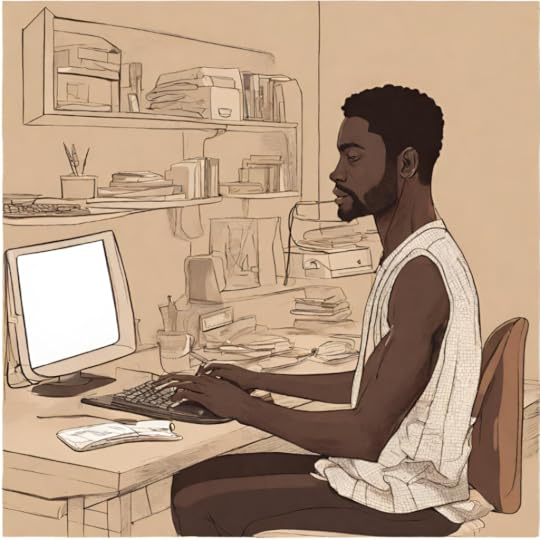
Your narratives, experiences, and imaginations are the lifeblood of this initiative. So, let your words flow and become an integral part of Short Story Mondays!
As we embark on this journey of Short Story Mondays, remember that every word you write is a step towards becoming a more skilled and confident storyteller. Your stories have the power to inspire, entertain, and resonate with others. They are a testament to your creativity and dedication to the craft of writing.
Let’s Get Writing!Start This Monday: Pick up your pen, open your laptop, and let the first prompt set your imagination free.Spread the Word: Share this initiative with friends and fellow writers. The more voices we have, the richer our Mondays will be.Short Story Mondays are not just about writing; they’re about building a community of storytellers. Let’s write, share, and grow together. Your story awaits!
February 7, 2024
Unsung Heroes and Their Stories
When we think of Black history, names like Martin Luther King Jr., Rosa Parks, and Malcolm X often come to mind. However, nestled within the rich tapestry of this history are lesser-known yet equally impactful figures whose stories remain largely untold. These unsung heroes, through sheer courage, ingenuity, and resilience, have made significant contributions that have shaped our world in profound ways. This blog post aims to shine a light on some of these remarkable individuals, celebrating their achievements and inspiring us to delve deeper into the vast and diverse narratives of Black history.
Story of Robert SmallsEarly Life and EnslavementBorn into slavery in 1839 in Beaufort, South Carolina, Robert Smalls’ life seemed predestined for hardship. Yet, his journey would become one of the most extraordinary tales of defiance and bravery in American history.
A Daring Escape
During the Civil War, Smalls, then a slave working on the Confederate transport ship CSS Planter, executed a daring plan. On May 13, 1862, he and a group of enslaved crewmen seized control of the ship in Charleston harbor. Disguising himself as the captain, Smalls navigated the Planter past Confederate forts, hoisting the white flag as he sailed to freedom and delivering the ship to Union forces. This audacious escape not only liberated the crew and their families but also provided the Union with valuable intelligence.
A Champion for the Union CauseFollowing his escape, Smalls’ valor didn’t wane. He served valiantly in the Union Navy, participating in numerous missions. His intimate knowledge of the Southern waterways proved invaluable to the Union’s blockade strategy.
Political AchievementsAfter the war, Smalls’ journey took yet another remarkable turn. He transitioned into politics, advocating for African American rights. Smalls became a powerful voice in South Carolina, serving in both the state legislature and the U.S. House of Representatives. His efforts were pivotal in the advancement of education and civil rights for African Americans during Reconstruction.
Robert Smalls’ life story, marked by courage and an unwavering quest for freedom and equality, serves as a powerful testament to the human spirit’s resilience.
Bessie Coleman’s Aviation TriumphsEarly Struggles and DeterminationBessie Coleman’s story begins in a world where neither her race nor her gender was allowed to soar the skies. Born in 1892 in Texas, Coleman grew up in a time of severe racial and gender discrimination. However, her dreams were as high as the sky – she yearned to be a pilot, a field completely dominated by white men. Facing these barriers, Coleman’s determination only grew stronger.
Journey to France for Aviation Training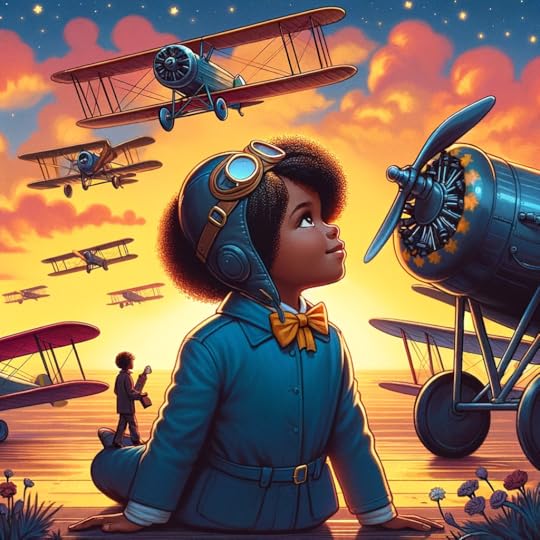
When no flying school in America would accept her because of her race and gender, Coleman took a bold step that would mark her place in history. In 1921, she traveled to France, determined to earn her pilot’s license. There, free from the racial prejudices that stifled her aspirations at home, Coleman trained at the famous Caudron Brother’s School of Aviation. Her hard work paid off, and she emerged not only as a qualified aviator but as the first African American woman to hold an international pilot’s license.
Impact and LegacyReturning to the United States, “Queen Bess,” as she was affectionately known, became a high-profile figure in the early days of aviation. She performed in countless air shows, dazzling crowds with her aerial acrobatics and inspiring a generation of African Americans to pursue their dreams, no matter how unreachable they seemed. Her legacy transcends her death in an aviation accident in 1926. Bessie Coleman remains a symbol of determination and breaking barriers, encouraging countless others to take flight in their pursuits.
Dr. Patricia Bath and Her Medical InnovationsBackground and EducationDr. Patricia Bath’s story is a remarkable journey of breaking barriers and pioneering innovation. Born in 1942 in Harlem, New York, Bath’s early interest in science was nurtured by her family and teachers. Despite the hurdles placed by her race and gender, she soared academically, earning a degree in chemistry and later her medical degree. Dr. Bath’s passion for medicine was not just about becoming a doctor; it was about changing lives.
Invention of the Laserphaco Probe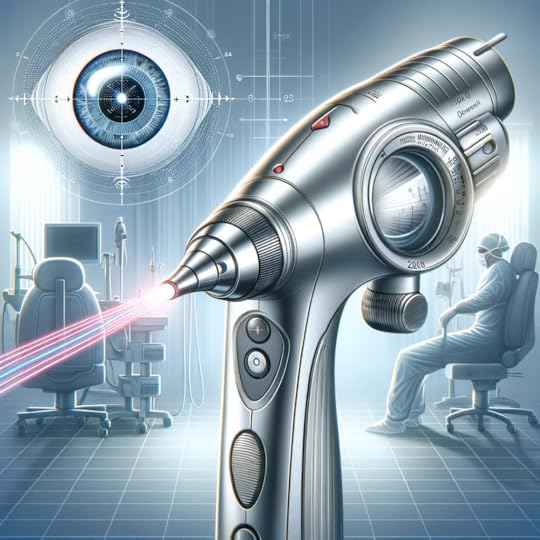
Dr. Bath’s most groundbreaking contribution to medicine came in the form of her invention: the Laserphaco Probe. This revolutionary device, developed in 1986, transformed cataract surgery, making it more accurate and less invasive. Her invention not only improved the technique but also increased the accessibility of treatment for patients worldwide, restoring sight to those who had been blind for decades.
Breaking Barriers in Medicine and TechnologyDr. Bath’s achievements extend beyond her invention. She became the first African American to complete a residency in ophthalmology and the first African-American female doctor to receive a medical patent. Her work has opened doors and shattered ceilings in the fields of medicine and technology. Dr. Bath’s career was driven by a profound commitment to service, particularly towards addressing preventable blindness in underserved populations. Her legacy is a testament to the power of innovation and determination in the face of adversity.
Bass Reeves: The Real Lone RangerEarly Life and Escape from Slavery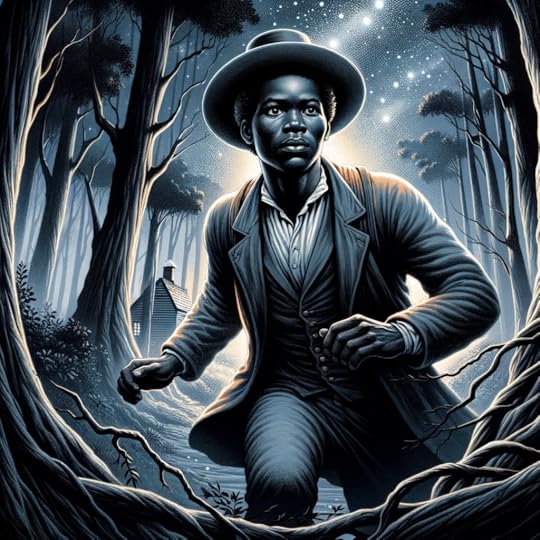
The life of Bass Reeves reads like a script from a thrilling western movie, yet it’s all true. Born into slavery in 1838 in Arkansas, Reeves lived a life that would shape him into one of the most formidable lawmen of the American West. During the Civil War, he escaped to Indian Territory (now Oklahoma), where he lived among Native American tribes, mastering their languages and learning their tracking and survival skills.
A Trailblazing LawmanAfter the war, Reeves emerged as a deputy U.S. marshal, the first black man to hold this position west of the Mississippi. Armed with his deep knowledge of the territory and a strong sense of justice, he was tasked with apprehending outlaws in the vast, wild expanse of the frontier. Reeves was a master of disguise, often using clever tactics and his fluency in several languages to track down and capture criminals. His unwavering integrity and bravery were legendary, and it’s said that he arrested over 3,000 felons without ever being wounded.
Legacy and InspirationThe most intriguing aspect of Reeves’ story is the belief that he was the inspiration for the iconic fictional character, the Lone Ranger. With his legendary status, remarkable exploits, and a career marked by honor and bravery, Bass Reeves not only left an indelible mark on the history of law enforcement but also became a symbol of the unsung African American heroes of the Wild West.
The stories of Robert Smalls, Bessie Coleman, Dr. Patricia Bath, and Bass Reeves are just a few threads in the rich and diverse tapestry of Black history. These individuals, with their extraordinary courage, resilience, and ingenuity, not only carved their own paths in challenging times but also paved the way for future generations. Their achievements are reminders of the countless unsung heroes whose contributions have often gone unrecognized but are nonetheless integral to our shared history. As we celebrate their legacies, let us continue to seek out and honor the myriad of other stories that enrich our understanding of the past and inspire our journey into the future.
February 5, 2024
The Rise of Afrofuturism
Today, I’m diving into something that’s really close to my heart: Afrofuturism. Imagine a creative space where science fiction and fantasy collide with the rich tapestry of African and Black culture – that’s Afrofuturism for you. It’s not just a genre; it’s a cultural movement, a reimagining of the future through a Black lens, and it’s absolutely fascinating.
Why am I talking about this? Because Afrofuturism isn’t just another trend. It’s a powerful way of envisioning and shaping futures, and it’s been influencing literature, movies, music, and art in ways that are as diverse as they are profound. So, buckle up! We’re about to embark on a journey through the rise of Afrofuturism, exploring its roots and branches in the world of sci-fi and fantasy. Trust me, it’s a trip worth taking.
An Origin StorySo, where did Afrofuturism start? Picture this: it’s the mid-20th century, a time of significant social and political upheaval. Amidst all this, a new voice begins to emerge in the arts – a voice deeply rooted in the Black experience, yet reaching for the stars and beyond.

Afrofuturism, as a term, wasn’t coined until the 1990s by cultural critic Mark Dery, but the seeds were sown much earlier. Think of it like a rich stew simmering on a stove, with each ingredient added over time adding depth and flavor. Early ingredients included the works of pioneers like Octavia Butler, whose stories weren’t just sci-fi; they were windows into alternate realities where race, gender, and the human condition were explored in radical new ways. Samuel R. Delany, another literary giant, pushed boundaries with his narratives, blending complex social and sexual themes into traditional science fiction settings.
Now, let’s talk about the timeline. The 1960s and ’70s were pivotal, with the civil rights movement influencing artistic expression across the board. This era gave us Sun Ra, a jazz musician whose cosmic philosophy and afro-centric music laid down the sonic foundations of Afrofuturism. By the 1980s and ’90s, we saw a surge in Afrofuturistic literature, with Butler’s “Parable” series and Delany’s expanded works setting the stage.
But Afrofuturism wasn’t just growing; it was evolving, absorbing influences from the African diaspora, technology, and global culture. It was becoming a way for Black artists to redefine their past and shape their future – a vibrant, ever-changing canvas that reflected the complexities of the Black experience.
Afrofuturism in LiteratureWhen we talk about Afrofuturism in books, oh boy, are we in for a treat! This is where imagination runs wild, and the usual rules of time and space just don’t apply. Afrofuturist authors aren’t just spinning tales; they’re weaving whole universes where African traditions and futuristic tech blend in the most mind-bending ways.
Let’s start with the queen herself, Octavia Butler. Her novels, like “Kindred” and “The Parable of the Sower,” are more than just stories; they’re powerful explorations of race, gender, and identity. Butler’s characters often find themselves in dystopian futures, but there’s always a glimmer of hope, a chance for change. She showed us that in Afrofuturism, even the darkest timelines can have a light.
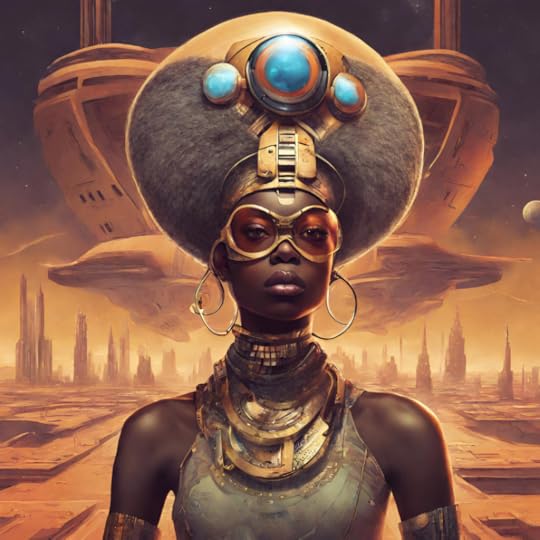
Then there’s Nnedi Okorafor, who brings a unique Nigerian perspective to her works. Her novel “Binti” is a fantastic blend of traditional African culture and space opera, telling the story of a young Himba girl who becomes the first of her people to attend a prestigious intergalactic university. It’s like nothing you’ve read before, trust me.
But it’s not just about the big names. Afrofuturism in literature is a garden of diverse voices, each bringing their own experiences and visions to the table. From Tomi Adeyemi’s “Children of Blood and Bone,” which mixes Yoruba mythology with magic and adventure, to Marlon James’ “Black Leopard, Red Wolf,” dubbed as an African “Game of Thrones,” the range is just incredible.
These stories do more than entertain; they challenge and inspire. They ask “What if?” and then dare to answer it in the most unexpected ways. Afrofuturist literature isn’t just a window into alternate realities; it’s a mirror reflecting our world’s complexities in the guise of the fantastical.
Afrofuturism in Movies and MediaAlright, let’s switch gears from the page to the screen. Afrofuturism isn’t just thriving in books; it’s making big waves in movies and TV too. This is where the visual magic happens, bringing those afro-centric sci-fi and fantasy elements to life in ways that just stick with you.
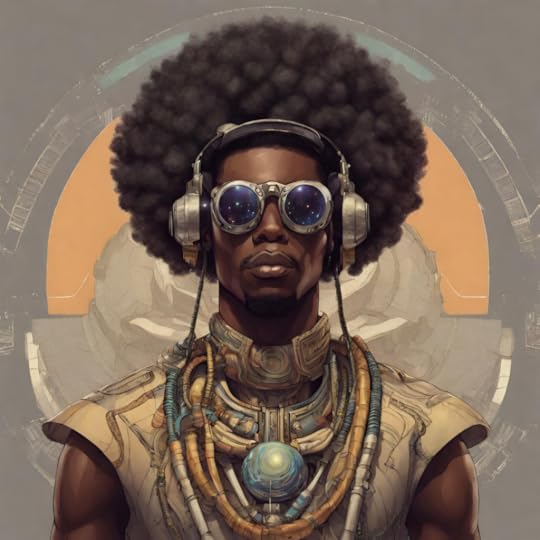
Let’s start with the elephant in the room: “Black Panther.” Man, what a game-changer! This Marvel blockbuster did more than just shatter box office records; it brought Afrofuturism into the mainstream big time. Wakanda’s blend of advanced technology and traditional African culture? Pure Afrofuturistic gold. It wasn’t just a superhero movie; it was a cultural phenomenon that showed the world the power and beauty of African narratives in sci-fi.
But Afrofuturism in film and TV isn’t new. Remember “Space Is the Place”? This 1974 avant-garde film starred Sun Ra, blending blaxploitation with cosmic philosophy and afro-centric futurism. It’s weird, wild, and absolutely worth watching.
Then there are gems like “Pumzi,” a Kenyan short film set in a post-apocalyptic world, which explores themes of nature and spirituality. It’s a haunting, beautifully crafted piece that leaves a lasting impression.
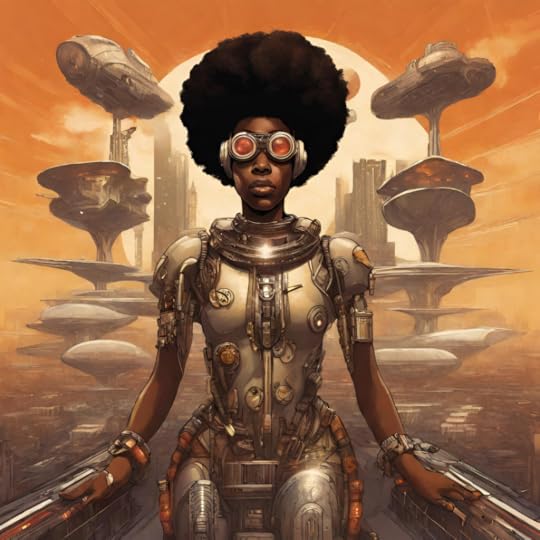
On the small screen, Afrofuturism has been making strides too. Shows like “Lovecraft Country” mix horror, fantasy, and historical drama, taking viewers on a wild ride through a racially segregated 1950s America but with a supernatural twist. It’s bold, it’s thought-provoking, and it’s unapologetically Black.
What’s fantastic about Afrofuturism in movies and media is the range. From indie films to big-budget blockbusters, these works are not just visually stunning; they’re layered with themes of identity, heritage, and the future of the African diaspora. They entertain, sure, but they also make you think, question, and dream.
Musical Inspirations and AfrofuturismMusic and Afrofuturism? They’re like peanut butter and jelly – perfect together! The music world has been a massive player in Afrofuturism, mixing beats with futurist themes and creating something that’s not just heard, but felt.
The godfather of Afrofuturistic music has got to be Sun Ra. This jazz legend was talking about space travel and cosmic philosophy back in the 1950s and ’60s, way before it was cool. His blend of experimental jazz, Egyptian iconography, and sci-fi imagery wasn’t just music; it was a whole vibe, a statement about Black identity and the future.
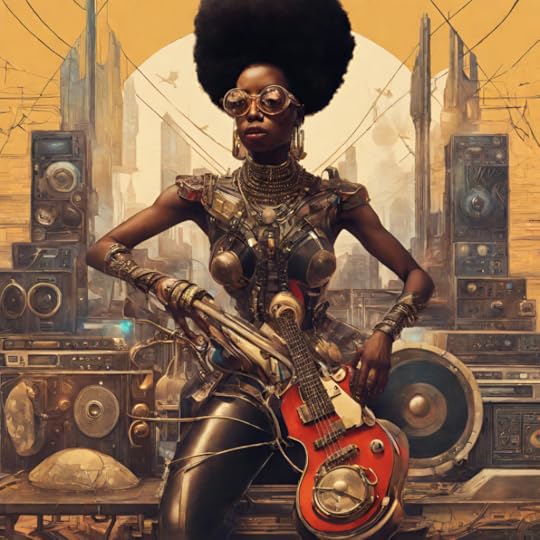
Fast forward a bit, and you’ve got artists like Janelle Monáe, whose albums like “The ArchAndroid” and “Dirty Computer” are like Afrofuturism 101. They’re a mix of funk, soul, and sci-fi themes, telling stories of identity, freedom, and rebellion. Her music videos? Straight-up visual feasts of Afrofuturistic aesthetics.
But it’s not just about individual artists. Afrofuturism in music is a movement, a rhythm that pulses through the veins of the culture. It’s about reimagining the Black experience, blending the past with futuristic dreams, and creating soundscapes that transport you to other worlds.
So, next time you’re listening to some beats with a spacey, futuristic vibe, remember: you might just be riding the Afrofuturistic wave.
Present and Future of AfrofuturismNow, let’s bring our Afrofuturistic journey to the present and gaze into the future. Afrofuturism isn’t a static concept; it’s dynamic, constantly evolving with the times. Today, it’s more vibrant and influential than ever, popping up in the most unexpected places and ways.
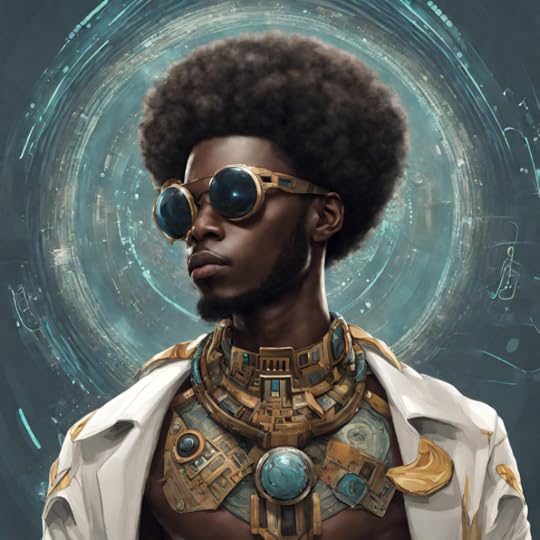
In the art world, we’re seeing incredible Afrofuturistic exhibitions that blend traditional African art with digital and futuristic elements. Artists like Osborne Macharia are creating stunning visual narratives that reimagine African history and future.
In literature, the genre keeps expanding. New voices are emerging, telling stories that push the boundaries of imagination. The success of books like “The City We Became” by N.K. Jemisin and “The Water Dancer” by Ta-Nehisi Coates is a testament to Afrofuturism’s growing appeal and relevance.
Looking ahead, the possibilities are endless. With advances in technology and a growing recognition of diverse voices, Afrofuturism could shape not just art and culture, but also social and political discourses. It’s a tool for empowerment, a way for the Black community to envision and build futures where they are not just included, but celebrated.

Afrofuturism is no longer just a niche; it’s a burgeoning field, ripe with potential and promise. It’s exciting to think about what the next chapter might hold!
And there you have it – our whirlwind tour of Afrofuturism, from its roots in literature and music to its spectacular splash in movies and beyond. It’s more than just a genre; it’s a movement, a way of seeing the world, and a bold statement about the future of Black culture. Afrofuturism reminds us that there are no limits to imagination, especially when it’s fueled by a rich heritage and a vision of a future where everyone has a place. So, keep your eyes on this space – the story of Afrofuturism is still being written, and the best is yet to come!
February 1, 2024
Celebrating Black History Month: A Journey Through Culture and Contributions
As February unfolds, we’re thrilled to dive into Black History Month, a time to honor, celebrate, and reflect on the richness of Black culture and achievements. It’s a month bursting with stories – some that’ll make you dance, others that’ll inspire deep thought and action. I’m committed to bringing you a kaleidoscope of experiences that capture the essence of Black history, culture, and contemporary life. From the soul-stirring rhythms of Black music to the profound insights of Black literature, the diverse representation in media, the transformative power of mentorship, and the crucial conversations around health disparities in our communities – I’ve got it all! So, grab your favorite drink, settle in, and join me on this enlightening journey!
The Rhythmic Heart – History of Black MusicMusic has always been the heartbeat of Black culture, a powerful form of expression that’s as diverse as the community itself. Let’s start our journey with the soulful history of Black music. This story begins in Africa, with rhythms and melodies that crossed oceans. In the United States, these sounds mingled with the existing cultural tapestry, giving birth to genres that would define and revolutionize the world’s music scene.
Jazz: The Sound of Freedom
Jazz, born in the vibrant neighborhoods of New Orleans, encapsulated the complexity of Black experiences – freedom, improvisation, and resilience. Artists like Louis Armstrong and Ella Fitzgerald took the world by storm, using their music as a form of expression and liberation.
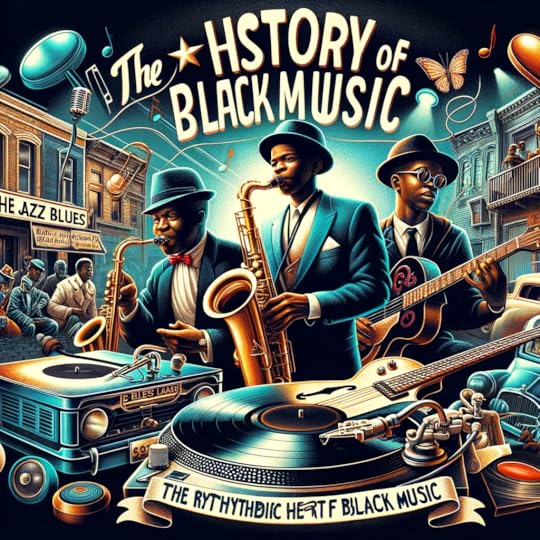
Blues: The Soul’s Language
Then came the Blues, raw and unfiltered. It spoke of life’s hardships and joys, becoming the voice of a community. Legends like B.B. King and Muddy Waters used their guitars to tell stories that resonated with millions.
Hip-Hop: A Cultural Revolution
Fast forward to the streets of New York in the 1970s, where Hip-Hop emerged. Artists like Grandmaster Flash and Tupac Shakur didn’t just create music; they narrated the reality of urban life, challenging social norms and advocating for change.
Each genre, each artist, has been a brick in the majestic edifice of Black music history. Their contributions have not just enriched the music world; they’ve shaped our society’s cultural and social landscape. So, as we groove to these beats, let’s remember and celebrate the pioneers who made it all possible.
The Power of Words – Exploring Black LiteratureIn the world of literature, Black authors have long used the pen as a mighty tool of expression and resistance. Their works have opened windows to diverse experiences, showcasing resilience, joy, struggle, and the rich complexity of Black life.
Voices That Echo Through Time
We celebrate authors like Maya Angelou, whose poetic words in “I Know Why the Caged Bird Sings” resonate with themes of overcoming adversity. James Baldwin, through classics like “Go Tell It on the Mountain,” navigates the intersections of race, sexuality, and identity, illuminating the Black experience in America.
Contemporary Chronicles
Contemporary Black literature continues this legacy with authors like Chimamanda Ngozi Adichie and Colson Whitehead. Their novels, such as “Americanah” and “The Underground Railroad,” respectively, weave narratives that confront historical and modern societal issues, urging readers to reflect and act.
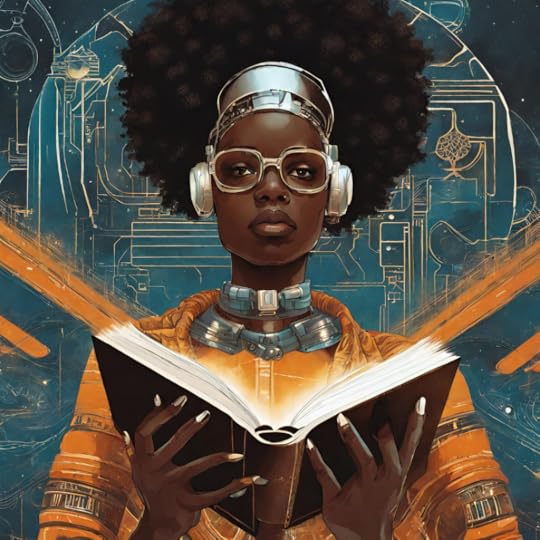
A Literary Legacy for All
Black literature is not just for Black readers; it offers insights and experiences that enrich everyone’s understanding of the human condition. From historical accounts to futuristic fantasies, these stories are a testament to the enduring spirit and creativity of the Black community.
As we turn each page of these powerful books, we’re not just reading stories; we’re immersing ourselves in journeys that challenge, inspire, and transform us. This Black History Month, let’s pledge to explore these literary treasures and carry their lessons into our daily lives.
Seeing Ourselves – Black Representation in MediaThe portrayal of Black individuals in media is a powerful tool for shaping perceptions and narratives. This Black History Month, we reflect on the strides made and the journey still ahead in achieving authentic and diverse representation.
From Stereotypes to Superheroes
Historically, media representation of Black people was fraught with stereotypes and limited roles. But the tide has been turning. We’ve seen a surge in Black-led films and TV shows that offer nuanced, diverse portrayals, breaking away from old clichés.
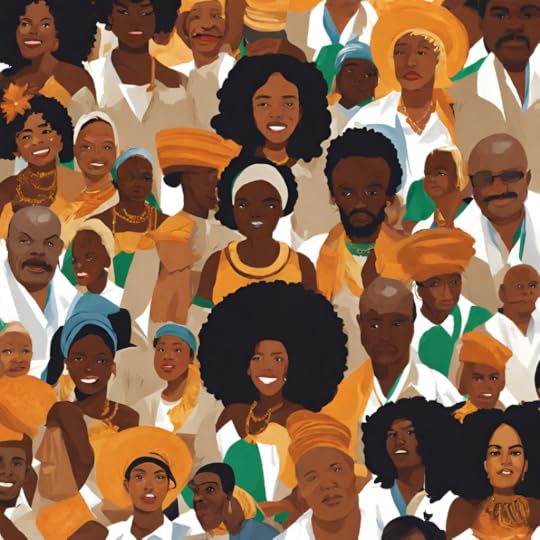
The Impact of Inclusive Storytelling
Shows like “Insecure” and “Black-ish,” and films like “Black Panther,” have not only been commercial successes but also cultural phenomena. They offer a glimpse into the everyday lives, struggles, and joys of Black individuals, celebrating the diversity within the community.
The Role of Media in Social Change
Media representation plays a crucial role in fostering understanding and driving social change. By seeing more Black creators, directors, and actors in influential roles, we inspire the next generation and reshape societal norms.
The landscape of Black representation in media is evolving, painting a more vibrant, diverse picture of the Black experience. It’s a celebration of progress, a reflection of our society, and a beacon of hope for what’s yet to come.
Guiding the Future – The Importance of Mentorship in the Black CommunityMentorship holds a special place in the heart of the Black community. It’s a powerful tool for empowerment, providing guidance, support, and opportunities to the next generation. This Black History Month, we celebrate the mentors who have shaped lives and the impact of mentorship programs.
Building Bridges to Success
Mentorship in the Black community goes beyond career guidance; it’s about building connections, sharing experiences, and offering wisdom that resonates on both personal and professional levels. Figures like Oprah Winfrey and Barack Obama serve as inspirational examples of the heights attainable with the support of mentors.

Stories of Transformation
We’ll share inspiring stories of mentor-mentee relationships that have led to significant personal and professional growth. From community leaders to successful entrepreneurs, these stories highlight the transformative power of mentorship.
A Call to Action
The need for mentors in the Black community is ongoing. We encourage our readers to consider becoming mentors themselves. Whether it’s through formal programs or informal connections, every effort counts in making a difference in someone’s life.
Mentorship is a gift that keeps on giving, fostering a cycle of growth and empowerment within the Black community. It’s about passing on the torch of knowledge and experience, lighting the way for future generations.
Health is Wealth – Addressing Health Disparities in Black CommunitiesHealth disparities in Black communities are a critical issue that requires attention and action. This Black History Month, we’re shedding light on this serious topic, exploring the causes, and celebrating those working towards change.
Understanding the Gap
The disparities in health outcomes for Black individuals are stark, rooted in a complex mix of socio-economic factors, systemic racism, and limited access to healthcare. Conditions like heart disease, diabetes, and maternal mortality are disproportionately higher in Black communities.

Champions of Change
Despite these challenges, there are many unsung heroes working tirelessly to close this health gap. We’ll highlight individuals and organizations making a difference through community health programs, advocacy, and research.
A Path Forward
Addressing health disparities is not just a matter for healthcare professionals; it’s a community-wide endeavor. We’ll discuss ways in which everyone can contribute, from advocating for policy changes to supporting local health initiatives.
Health is a cornerstone of thriving communities. By bringing these issues to the forefront, we aim to spark conversations and actions that lead to meaningful change in the health and well-being of Black communities.
A Month of Reflection and Celebration
As we wrap up our journey through Black History Month, let’s take a moment to reflect on the stories, achievements, and challenges we’ve explored. From the rhythmic heartbeats of Black music to the transformative power of literature, the inspiring representation in media, the invaluable gift of mentorship, and the vital conversation on health disparities, we’ve covered a spectrum of topics that touch the essence of the Black experience.
This month is more than just a celebration; it’s a call to action for continuous learning, understanding, and support. Let’s carry the spirit of Black History Month throughout the year, embracing the lessons learned and the stories shared. Together, we can continue to honor the past, empower the present, and shape a brighter future.
Thank you for joining me on this enlightening journey. Let’s keep the conversation going and the action flowing, not just in February, but all year round!
January 29, 2024
Beat Burnout
Today, I’m diving into a topic that’s unfortunately, been my experience – burnout. Think of it as that feeling where your brain feels like it’s been put through a blender after weeks, or even months, of non-stop grind. You know, when you’re mentally, emotionally, and physically drained to the point where your favorite Netflix show doesn’t even spark joy anymore? Yep, that’s burnout for you.
A few years back, I hit a wall. I was juggling my job, a side hustle, and what I liked to call a social life (which was basically me scrolling through social media, too exhausted to actually socialize). I learned the hard way that burnout isn’t just a fancy word for being tired; it’s a serious deal. So, let’s unpack this together.
Understanding BurnoutWhat Exactly is Burnout?
Burnout is like that annoying party guest who overstays their welcome. It’s a state of emotional, physical, and mental exhaustion caused by excessive and prolonged stress. It happens when you feel overwhelmed, emotionally drained, and unable to meet constant demands. As the stress continues, you begin to lose the interest and motivation that led you to take on a certain role in the first place.
The Culprits Behind Burnout
So, what lights the fuse? It could be a myriad of things – an overbearing workload, a toxic work environment, or maybe even the pressure we put on ourselves to be perfect. For me, it was the latter mixed with a dash of ‘I can do it all’ mentality.
Red Flags of Burnout
Recognizing burnout isn’t always as straightforward as we’d like it to be. It’s not just feeling tired. It’s a persistent sense of disillusionment, lack of accomplishment, and detachment from what you do. Physical signs can include things like constant headaches, a weakened immune system (hello, frequent colds!), and changes in appetite or sleep patterns.
The Emotional Toll of Burnout
On the emotional front, burnout can make you feel drained, unable to cope, and tired all the time. It’s like carrying a backpack full of bricks, with each brick representing a task or responsibility. Eventually, you feel so weighed down that even getting out of bed can seem like a Herculean task.
Burnout vs. Stress
It’s crucial to distinguish between stress and burnout. Stress is like running on a high-speed treadmill. It’s exhausting, but you’re still moving. Burnout, on the other hand, is when the treadmill comes to an abrupt halt, and you find yourself sprawled on the ground, unable to get up. In simpler terms, stress involves too much: too many pressures, too many demands. Burnout is about not enough: being empty, devoid of motivation, and beyond caring.
Personal Experiences with BurnoutHitting the Burnout Wall
I still remember the day I hit my burnout wall. It was a Tuesday (because, of course, it had to be a Tuesday), and I sat at my desk staring at my computer screen. The cursor blinked mockingly at me, as if challenging me to type just one more email. But I couldn’t. I was mentally and emotionally tapped out. I felt like a zombie, going through the motions but feeling nothing.

The Ripple Effects
This state of burnout didn’t just affect my work; it seeped into every aspect of my life. My relationships suffered because I had little energy left for anyone, not even for myself. My health took a nosedive too. I was either sleeping too much or not at all, and my eating habits were all over the place.
The Wake-Up Call
The wake-up call came when I started forgetting things – important things, like meetings and deadlines. That’s when I realized this was more than just being tired. I was burning out, and I needed to do something about it.
Tips to Avoid Burnout1. Setting Boundaries: The Power of ‘No’
One of the biggest lessons I learned was the importance of setting boundaries. It’s okay to say ‘no’ to extra projects, social events, or anything that doesn’t align with your current capacity. Remember, every ‘yes’ you give is a little bit of your time and energy. Be selective about where you invest these precious resources.

2. Taking Breaks and Time Off
This might sound like a no-brainer, but you’d be surprised how many of us forget to actually take breaks. And I’m not just talking about vacation days (though those are super important too). Daily breaks, even if it’s just a quick walk around the block or a 10-minute meditation session, can work wonders.
3. Building a Support Network
Having people you can rely on, both professionally and personally, is crucial. It’s not just about having someone to vent to; it’s about having people who can offer perspective, help shoulder some of your burdens, or even provide practical assistance when needed.
4. Engaging in Hobbies and Interests
Remember what it’s like to do something just because you enjoy it, not because you have to? Rekindling hobbies and interests outside of work can be incredibly rejuvenating. Whether it’s painting, hiking, or playing a musical instrument, these activities provide a much-needed mental break.
5. Staying Active and Healthy
Exercise isn’t just good for the body; it’s also great for the mind. Regular physical activity can help reduce stress and improve your mood. And don’t forget about nutrition! Eating a balanced diet can have a significant impact on your energy levels and overall well-being.
6. Seeking Professional Help
Sometimes, the best course of action is to seek help from a therapist or counselor. There’s absolutely no shame in it. In fact, it’s a sign of strength to recognize when you need professional support.
ConclusionPhew! We’ve covered a lot of ground today, haven’t we? From understanding what burnout really is to sharing some personal stories and, most importantly, discussing practical tips to avoid crashing into that dreaded burnout wall.

If there’s one thing I want you to take away from this, it’s that burnout isn’t just a buzzword or a temporary state of tiredness. It’s a serious signal from your mind and body, telling you to slow down and reassess how you’re managing your life.
I’ve been there, and trust me, climbing out of the burnout pit isn’t a walk in the park. But it’s definitely possible with the right strategies and mindset. Remember to set those boundaries, take breaks (and I mean real breaks), find joy in hobbies, stay active, lean on your support network, and seek professional help if needed. Your mental and physical health is priceless, and it’s essential to prioritize them.
So, let’s make a pact to be more mindful of our well-being. Let’s promise to spot the signs of burnout early and take proactive steps to keep it at bay. Your health, happiness, and sanity are worth it. Here’s to a healthier, more balanced, and burnout-free life!
January 26, 2024
The Evolution
You’ve known this little corner of the internet as my personal oasis, a place where I poured out thoughts, dreams, and, admittedly, a few rants. It was my digital diary, a spot for me to vent and ramble, often for pages at a time. But you know what? Things are changing – for the better!
I realized that this space, rich with words and emotions, could be so much more than just my personal soundboard. It’s high time to fling open the doors of MyuniqueGreen.com and welcome everyone into a world of motivation, learning, and unexpected insights. So, what exactly does this mean? Stick around, and I’ll walk you through the exciting new journey we’re about to embark on together!
The Journey So FarAh, the early days of MyuniqueGreen.com! It feels like just yesterday when I first hit that ‘publish’ button, sending my thoughts into the vast digital world. Back then, the blog was my solace, my personal stage. It was a blend of late-night musings, bursts of inspiration, and, let’s be real, some good old-fashioned venting. This blog was my heart and soul in words, raw and unfiltered.

I remember sharing stories about everything from my daily grind to the lofty dreams that kept me up at night. And to my surprise, these rambles resonated with many of you. We formed a niche community, bonded by the relatable messiness of life. It was comforting, knowing that my words weren’t just vanishing into the ether but were landing in the hearts of like-minded souls.
Those days were special, full of growth and self-discovery. But as the blog grew, so did my realization. It dawned on me that MyuniqueGreen.com had the potential to be more than just my personal echo chamber. It could be a beacon, a gathering place for people from all walks of life to find inspiration, learn, and perhaps see the world through a different lens.
Realizing the Need for ChangeThere was this one evening, I remember vividly, when the seeds of change were sown. I was scrolling through the comments on a particularly personal post, and something struck me. Amid the supportive messages and shared experiences, I saw a pattern – a community silently growing, seeking connection, guidance, and a spark of motivation. That’s when it hit me this could be so much more than just my personal diary. It could be our shared space, a vibrant community where not just my voice, but many voices could resonate.
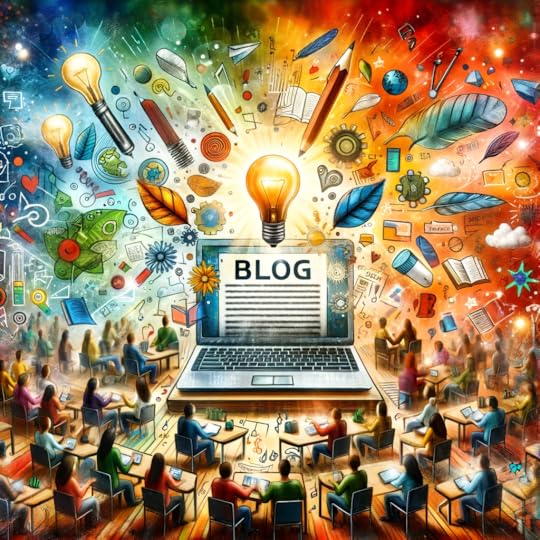
This epiphany was thrilling, yet humbling. I thought about you – yes, you reading this – and the countless others who might stumble upon this blog seeking solace, inspiration, or a new perspective. I envisioned a platform not just for venting, but for empowering; not just for journaling, but for journeying together. It was time to shift gears, to transform this space into a haven for collective growth and learning.
So, I set out to reimagine the MyuniqueGreen.com experience. I wanted it to be a sanctuary where we could all share our stories, challenges, triumphs, and, most importantly, our diverse viewpoints. A place where motivation isn’t just a word, but an experience; where learning new writing techniques isn’t just about better sentences, but about better expressing our unique voices; where thinking about the unthought isn’t just encouraged, but celebrated.
New Features and ChangesTransitioning MyuniqueGreen.com into a communal hub of motivation and learning meant introducing some exciting changes. First and foremost, I wanted to bring our stories to life, not just through words but visually too. That’s why you’ll now see a lot more images peppering the posts. These aren’t just any images; they’re carefully chosen to resonate with the stories I tell, to add color and emotion to our shared narratives.
But what good are visuals without fresh, relevant content? So, I’ve broadened our horizons topic-wise. Expect posts that touch on everyday experiences, practical life tips, creative writing insights, and those quirky thoughts that often go unspoken. These topics aren’t just chosen by me; they’re inspired by you, the readers. After all, what’s more relevant to the everyday person than the everyday experiences and thoughts of our own community?

And here’s something I’m really excited about: the introduction of interactive elements. Think guest posts from some of you, interviews with budding writers, and Q&A sessions where we dive deep into the nuts and bolts of creative writing. The idea is to not just create a blog but to foster a platform where we can all learn from each other, share our expertise, and grow together.
These changes are just the beginning.
MyuniqueGreen.com is evolving, and so is our journey together. I’m committed to making this space as inclusive, engaging, and inspiring as possible. Whether you’re here for a quick read, a deep dive into writing techniques, or just to feel a part of something, know that this space is for you.
What to Expect NextAs I steer MyuniqueGreen.com into new waters, I’m brimming with excitement about what lies ahead. Here’s a sneak peek into what you can expect in the near future:
Diverse Topic Exploration: From the art of storytelling to the simple joys of everyday life, our topics will continue to expand. Upcoming posts will delve into areas like mindfulness in writing, the power of narrative in personal growth, and even fun explorations of lesser-known writing genres.Series and Special Features: Keep an eye out for themed series that dive deep into specific aspects of writing and creativity. Imagine a month-long journey into the world of poetic forms, or a special feature on harnessing creativity in everyday life.Collaborations and Guest Writers: I’m reaching out to fellow bloggers, authors, and thought leaders to bring you fresh perspectives and unique voices. These collaborations will introduce new styles and insights, enriching our community’s experience.My vision for the future is not just as a blog but as a thriving community hub. A place where each visit leaves you with a nugget of wisdom, a burst of inspiration, or a new friend in the writing world. As we embark on this journey together, your input, your stories, and your presence will shape the path we take.
Gone are the days when this was just my solitary haven for venting and musing. Today, it stands reborn as a vibrant community space, pulsating with shared stories, collective wisdom, and a spirit of exploration.
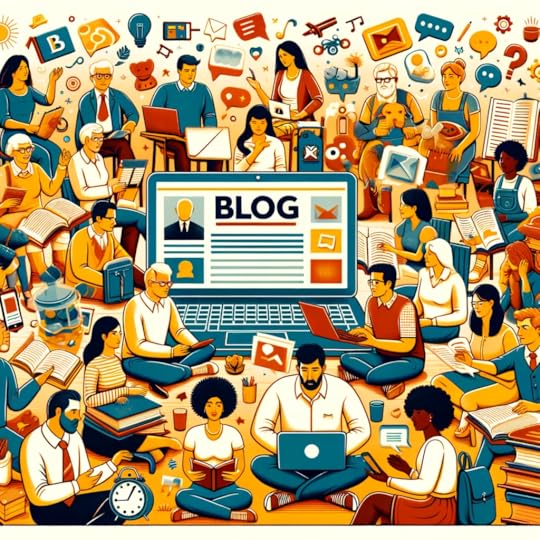
As we move forward, remember that this isn’t just my journey; it’s ours. Each one of you is a vital part of MyuniqueGreen.com. Your voices, your stories, and your insights are what will make this space truly special and unique. Whether you’re here to find motivation, to learn something new about writing, or simply to enjoy a moment of connection, know that you are always welcome and valued.
So, come along! Dive into the conversations, share your thoughts, contribute your stories, and let’s make MyuniqueGreen.com a beacon of inspiration and community. Here’s to new beginnings, endless learning, and a journey of shared growth and creativity!
Thank you for being a part of this adventure. I can’t wait to see where we go together.
January 22, 2024
AI in Writing: Pros and Cons
Hey there! Have you ever wondered what it’s like when creativity meets artificial intelligence (AI)? As a writer in the digital age, I’ve been both curious and cautious about the role of AI in creative writing. It’s a bit like inviting a robot to a poetry slam – intriguing yet slightly unsettling, right? In this post, we’re diving into the world of AI in creative writing. We’ll explore the good, the bad, and the quirky sides of this tech-meets-talent story. Whether you’re a seasoned writer, a curious newbie, or just here for the ride, there’s something for everyone. So, grab a cup of your favorite beverage, and let’s unravel this techy tale together!
What is AI in Creative Writing?When we talk about AI in creative writing, what exactly are we referring to? In simple terms, it’s like having a digital writing buddy powered by some seriously smart algorithms. This AI buddy doesn’t just correct your grammar or spellings; it goes beyond that. It can suggest whole sentences, dream up stories, or even write poetry!
Think of it as a tool, kind of like a more advanced version of auto-complete on your phone. You start a sentence, and bam! The AI suggests how to finish it. But it’s not just parroting back words; it’s learning from a vast library of existing literature and writing styles. It’s like having a mini Shakespeare, J.K. Rowling, and Stephen King rolled into one in your computer, ready to pitch in ideas.

But it’s not just about mimicking styles. AI can generate original content too. Need a story about a space-traveling cat? Or a poem from the perspective of a raindrop? AI’s got you covered. The beauty of this is the sheer variety and creativity on offer. It’s like opening a door to a room full of writers from every genre imaginable.
Yet, as we’ll see, it’s not all sunshine and rainbows. While AI can be a fantastic tool, it has its limitations and ethical dilemmas, which we’ll explore later on. For now, imagine this: a world where writer’s block is just a bad memory, and your creative muses are just a few clicks away. Tempting, isn’t it?
Pros of Using AI in Creative Writing A. Time-saving and EfficiencyOne of the most significant advantages of using AI in creative writing is how much time it saves. Imagine you’re working on a deadline, and the clock is ticking ominously. With AI, what used to take hours can now be done in minutes. It’s like having a super-efficient assistant who’s ready 24/7 to help churn out ideas, phrases, or even entire paragraphs. This efficiency doesn’t just speed up the writing process; it allows more time for refining and editing, ensuring the final piece is polished and high-quality.
B. Overcoming Writer’s BlockWriter’s block – the dreaded enemy of all writers. It’s like hitting a mental wall, and no matter how hard you try, words just won’t flow. Here’s where AI can be a game-changer. By suggesting ideas or continuing where you left off, AI can provide that much-needed spark to reignite your creativity. It’s like having a creative partner that never runs out of ideas, ensuring the well of inspiration never runs dry.
C. Diversity of Ideas and StylesThe diversity of ideas and styles that AI brings to the table is nothing short of amazing. With access to a vast array of genres, writing styles, and historical literature, AI can offer perspectives and voices that you might not have considered. Want to write a Victorian-era romance? Or a futuristic sci-fi thriller? AI can provide suggestions in these styles, enriching your work with varied tones and flavors. This diversity not only enhances creativity but also broadens a writer’s skill set.
D. Accessibility for All WritersAI in creative writing isn’t just for seasoned professionals; it’s a boon for beginners and those with writing challenges too. For someone just starting, AI can serve as a gentle guide, helping to shape thoughts into coherent narratives. It’s also a powerful tool for those who might struggle with language barriers or dyslexia, making the art of writing more accessible and less daunting. In essence, AI democratizes the writing process, opening it up to anyone with a story to tell.
Now, it might sound like AI is the best thing since sliced bread for writers. But, as with any technology, there’s another side to this story. In the next section, we’ll delve into the cons of using AI in creative writing. Spoiler alert: it’s not all rosy.
Cons of Using AI in Creative Writing A. Lack of Emotional DepthOne significant drawback of AI in creative writing is the lack of emotional depth. While AI can generate content that is technically sound and stylistically varied, it often struggles to capture the nuanced emotions that human writers inject into their work. Emotional storytelling is not just about using the right words; it’s about understanding the complex tapestry of human feelings and experiences. AI, at its current stage, can’t fully replicate this emotional intelligence. It’s like having a beautifully painted picture that, upon closer inspection, lacks soul.
B. Potential to Diminish Creative SkillsThere’s a concern that over-reliance on AI could lead to a decline in creative skills. Writing is like a muscle – it needs to be exercised regularly to stay strong. If writers start depending too much on AI for ideas or content generation, there’s a risk that their own creative abilities could atrophy. It’s a bit like using a calculator for every simple math problem; over time, you might find yourself struggling to do basic calculations in your head.
C. Ethical Concerns and Originality IssuesThe use of AI in creative writing also raises ethical questions, particularly around originality and plagiarism. Since AI generates content based on existing literature, there’s a fine line between inspiration and imitation. This blurs the boundaries of what is considered original work. As a writer, you want your voice to be uniquely yours, not an echo of a machine’s interpretation of other texts. Navigating this ethical minefield can be tricky and is a significant concern in the literary community.
D. Dependence on TechnologyFinally, there’s the issue of becoming too dependent on technology. As exciting as it is to have a tool that can aid in writing, there’s a certain magic in the traditional process of penning down thoughts, ideas, and stories. Relying too heavily on AI risks losing that personal touch and connection that comes from crafting a narrative with your own imagination and experiences. It’s crucial to find a balance, using AI as an aid, not a crutch.
So, there you have it – the pros and cons of using AI in creative writing from my perspective. It’s a mix of amazing potential and noteworthy caution.
Personal Experiences with AI in WritingLet me share a bit about my journey with AI in creative writing. It’s been a mixed bag of fascinating discoveries and sobering realizations. When I first dabbled with AI tools, I was blown away by the speed and variety of content it could produce. Need a poem on a specific theme? Done in seconds. Want to start a story but stuck on the first line? AI had suggestions ready.
However, as I used AI more, I noticed a pattern. The stories and poems had flair, sure, but they lacked a certain… heart. They were like well-assembled jigsaw puzzles missing the final piece that makes the picture whole. That’s when it hit me – AI can assist, but it can’t replace the human touch in storytelling, the emotional connection that resonates with readers.

I also caught myself getting a bit lazy. Why rack my brain for an idea when AI could spit out ten? This was a wake-up call. I realized that while AI is a fantastic tool, it’s crucial not to lose the essence of what makes writing so personal and fulfilling – the joy of creating something uniquely yours.
So now, I use AI as a companion in my writing journey, not as a pilot. It’s there for inspiration, for overcoming the occasional writer’s block, but the core of my writing remains distinctly human – flawed, emotional, and wonderfully mine.
ConclusionAnd there we have it – a stroll through the intriguing landscape of AI in creative writing. It’s a world where technology offers amazing tools that can inspire, assist, and even challenge us as writers. From the efficiency and diversity AI brings to the creative process, to the concerns about emotional depth and originality, it’s clear this journey with AI is complex and multifaceted.
My take? AI in creative writing is like a spice in cooking – used wisely, it can enhance the dish, but too much can overpower the original flavors. As writers, it’s important to embrace new tools and innovations, but equally crucial to retain the essence of our human creativity.
So, what do you think? Will AI be your co-author, your muse, or just an occasional visitor in your writing endeavors? The future of AI in creative writing is as much in our hands as it is in the algorithms. Let’s write it well.
December 29, 2023
Justice is a Maze +Book Sample
I’m so excited to bring ya’ll my newest book: Linked by Ink!
I know, I just kinda jumped right into it, didn’t I? Well, I’ll take it back a little bit to a few months ago when I had this idea floating around in my head. Don’t worry, I’m gonna keep it short. I wanted to write something that was completely different than anything I’ve written before, but still stay true to the thrilling mystery writer that I am at heart. I also wanted to write something that could matter to someone someday.
Much like the protagonist in the book, I felt stifled and limited in things that I wanted to write, versus what actually came out. What came to me was the idea to write an investigative novel where a journalist starts to uncover a pattern of systematic issues.
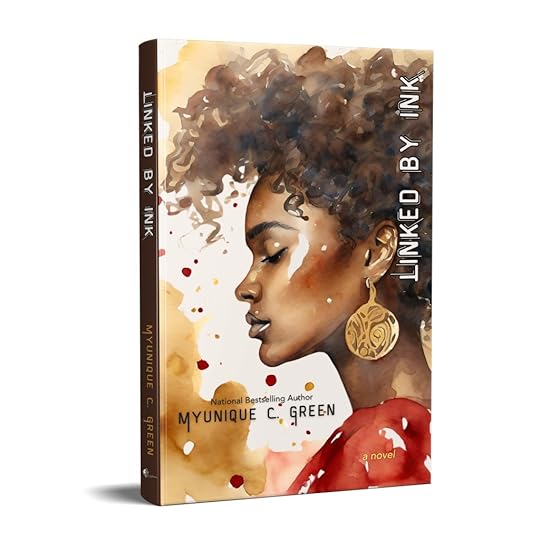
Here’s what’s on the back: In the shadows of San Corleone, journalist Jonae Bates unravels a web of mystery surrounding a series of police shootings. Denied by her own newspaper, Jonae goes undercover in the enigmatic community of Grande Gables, where secrets run as deep as the scars left by the corrupt officers. Teaming up with the elusive Detective Vincent Wayans, Jonae peels back layers of deception, exposing a conspiracy that challenges her perceptions of justice. Linked by Ink is a haunting tale where the line between truth and deception blurs, leaving readers questioning the very foundations of trust.
I wanted to combine elements of a woman sleuth, with something that I personally love to do–writing. What came out was Jonae, a resilient and tenacious black woman, who never takes no as the final answer.
As the story unfolded, I become Jonae, navigating the intricate dance between truth and deception. Grande Gables revealed itself as a labyrinth of hidden truths, and the scars etched by corrupt officers are more than just physical. In my pursuit of justice, I team up with the elusive Detective Vincent Wayans, a character as mysterious as the case itself.
This is the culmination of countless hours of research, writing, and passion. To give you a taste of what’s to come, I’ll be attaching a sample that captures the essence of the shadows, the mysteries, and the unraveling truth.
Make sure you get all the way to the end for a special bonus!
Enjoy!
Linked by Ink is live now! Available on Amazon Kindle and Print in both paperback and hardcover on iWriteBooksPub.com
linked-by-ink_sampleDownloadDecember 12, 2023
Review: The Guilty Twin by Holly Riordan
I first ran across this author a few years ago in 2020. You may remember The Book Report episode I did for Forget Her in what now seems like forever ago. It was one of my favorite books of the time, so when I heard that she was releasing another book, kind of along the same theme (not a sequel) it was an easy preorder.
The Guilty Twin came out this year back in July, and I started reading it while sitting on my delayed Delta flight on my way to Nashville for the summer. From the first few pages, I settled in for what was building up to be one long Who Done It? It’s also listed under thriller, but I didn’t find a single thing thrilling about it. Well, not in a nail-biting, edge of your seat, kind of way, anyways.
There were a lot of things I liked about the story. First, I’ll say that I loved the character development. They felt human, and oddly relatable.
Evan starts out the story on a date that isn’t really going all that great, and although I’m sure she’ll never admit it, those attachment issues were sending red flags up all over the place. Still, she manages to land a second date, and third, and sixth. That’s when we find out that she’s moved back to her childhood small town after a failed marriage and is living with her parents. We’re also introduced to the centerpiece of what the plot hangs on, Faith Flynn, who is presumed dead and it’s been that way for the last decade.
Here’s one thing I like about Evan right off the back, she doesn’t like Faith. At all. Not even a little bit. You know how people memorialize the dead like saints? Yeah, she doesn’t have that. She never wavers from her dislike of Faith throughout the whole book, there’s not even a moment towards the end when we find out how everything unfolded that she shows any type of care about Faith. Now, while she has this disdain for Faith, she doesn’t feel the same way about Faith’s twin, Fiona, who Evan has been in love with since they were knee-high to a grasshopper.
Over the years, Evan and Fiona’s relationship is estranged–and why wouldn’t it be when Evan disappeared almost immediately after Faith disappeared? Evan ditched that town almost immediately after senior year. Her disappearing was two-fold though, she had good reason to believe she could be implicated at any time for Faith’s disappearance, but also, she didn’t want to be a big fish in a small pond. So, she went off the college, married a man, and did well for herself–right up until her husband wanted to get her pregnant.
Evan, as flawed as she is, was my favorite character.
Fiona, on the other hand, was an emotional wreck for a good 98% of the book, and her moods gave me whiplash.
I could have read the entire book from Evan’s POV, but alas, it was written in an alternating style between both Evan and Fiona. Don’t get me wrong, it was well done, the whole story flowed without missing a beat. It was just Fiona’s mood was unstable, and that’s not even touching on the fact that she has OCD.
Speaking of, I have to take a moment and say how incredibly well-written Fiona’s compulsions were. They didn’t fall into cliche at all, and I think I spent more time marveling at how Holly wrote them into the story than acknowledging the dark cloud that loomed over my head every time I had to read Fiona’s POV. But I guess that’s neither here nor there.
Anyways, OCD aside, Fiona didn’t know whether she was going or coming quite often. It didn’t make her version of events any less interesting to read. Most of the town thought she was the one who killed her twin and disposed of the body, and they wasted no time making her feel guilty about it.
Things just seem to happen to Fiona, almost like she has no control over her life. Her parents control where she works, she hasn’t had much of a dating life, and I was partially surprised that she didn’t actually live with her parents. So, kudos to her for getting an apartment and an emotional support animal. But that’s just about where it stops. I wish I could say that her life would have turned out much different if Faith had never disappeared, but I’m unsure. She was always the well-to-do twin.
Alright, let’s get to the other twin (which I think would have been a good title for this book too), who it doesn’t take much sleuthing to figure out is an absolute villain. No one really liked her, at least not the people that spent any real time around her. Since she had to work in the movie theatre with other teens, everyone there literally only tolerated her because she was their bosses daughter. Even Fiona, in all of her wallowing, had very little good things to say about her.
She loved her sister, but about as much as you can love a skunk. Pretty, majestic, you want to be close to it, but the moment it feels threatened–a gas bomb. Faith was always feeling threatened.
Would I read a book written about Faith? Absolutely. Her character spends most of the book as an enigma. Literally nobody knows what motivated her, but everything made her tick. I could see myself invested in her villain origin story.
There are some other characters that make up the main cast, but we never spend any time in their POV. They are a diverse group of people, I’ll say that. You have Seth, a squeaky clean jock, turned accountant. Cameron, a junkie, who has been a junkie forever. Raven a hairstylist, that used to date the jock. They’ve all pretty much stayed in the town and not ventured too far away, aside from going to college.
Cameron is either high or drunk 99% of the time his name is mentioned. But everybody trusts him, oddly. He also wasn’t written as the “comedic relief” junkie either. He’s just there to give his piece of the story, and then he politely bows out.
Raven, the town’s token black woman, is about as nice as they come. There’s one sentence, when Evan is explaining why everyone needed an alibi, that says: “Raven’s Black, so we didn’t trust the cops within a hundred feet of her.” My antennas went up. Not simply because I too am a black woman, but because of the implication that Raven only had something to lose because she was black. Everyone else had scholarships, and rock band deals, and here comes Raven who gets to use her “Black Card” for the first time to get out of trouble. I understand the overall context, but if it had played out that Raven had more to do with Faith’s disappearance and got away with it for a decade, because they didn’t want to accuse her–also because she’s black–I would have been more satisfied with the ending than I was.
Seth was a guy who was used to getting what he wanted. He had his cake and ate it too, for as long as he could. Beautiful kids, beautiful wife. Trips to Greece, yacht parties, you name it.
By the end of the book, the mystery had gone on so long, I almost wanted to skip ahead and then come back to the backstory. But, I stayed the course and finished. I have to say that the ending was not as satisfying as I was hoping, though I spent most of the book trying to guess the ending (kind of how I did Forget Her), and at one point I thought I had open and shut the case. Fiona was written almost manically, and I just knew she was blacking out and having a dissociative identity crisis. Afterall, she had spent a lot of time in the psych ward. Like, did she actually have a twin? I would have probably liked that ending better, but that wasn’t it, unfortunately. Faith is real. The mystery is real. It’s all solved in about 3 pages.
I intentionally didn’t write any spoilers, because I do believe the mystery is worth solving. It was worth the read. I do feel that so much time was spent on building up the mystery for that ending, and then it was just over.
For my final thoughts, I enjoyed the book for what it was. Definitely a page turner, and keeps you guessing right up until the end, just when I felt like I had it figured out, I was proven wrong. It gave me something to do on a day that I was watching paint dry at work. It’s not and edge of your seat read, but it is mysterious and has a host of flawed characters that add that perfect balance of realism this type of story needs. I had a sense that this scenario could play out in real life, and I would be curled up in my blankets watching it as a Cold Case Files episode. The Guilty Twin is compelling, engrossing, and at times downright surprising.
I recommend for readers who like a little bit of a slow burn, those interested in a sapphic main character, and OCD representation that is outstandingly written.
You can get The Guilty Twin on Amazon or Thought Catalogue.
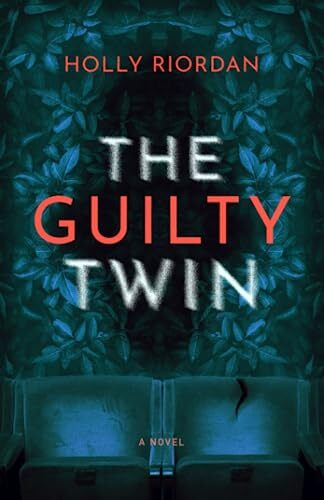
Here’s what on the back:
The guilt will kill you. Unless your family does first… Evan has spent the last decade trying to forget senior year—the panic when Faith Flynn disappeared, the lies she told the police, the secrets she still plans to take to her grave. After graduation, she couldn’t move away fast enough, but divorce has forced her back to her dreary hometown. As if living with her parents at almost thirty isn’t punishment enough, she’s welcomed home with messages from Faith. Or, at least, someone claiming to be her.
Fiona has been receiving similar messages from Faith, her twin, the one everyone believes she murdered in cold blood. And it doesn’t feel like a coincidence that this is happening as soon as her ex-best friend Evan has arrived in town. As the ten-year anniversary of Faith’s disappearance looms closer, the encounters grow more disturbing. No one is safe from the mysterious person stirring up trouble in their small town, but Evan and Fiona will risk death to expose lies. Or to keep them.



